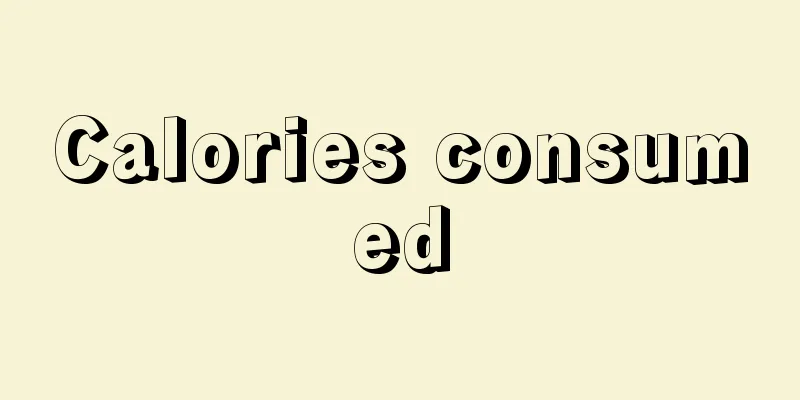Calories consumed

|
Calorie is a unit of energy. Although the international standard unit of energy is joule, more countries use calorie. This unit is widely used in the diet and weight loss industries. For many foods, calories are used to calculate their energy content. For those who are losing weight, they are very sensitive to the term calorie. They almost don't want to eat foods with high calorie content for fear of gaining weight. Energy consumption is also calculated using calories. People often mention calories as a unit of energy in their daily lives, and some foods are often labeled with the number of calories they contain. However, when asked how much a calorie is, few people can answer. The following introduces the concept of calories to help you better calculate calorie consumption. Calories actually they apply to anything that contains energy. For example, 4 liters of gasoline contains about 31 million calories of energy. With the calories in 217 Big Macs, you could drive 22 miles. Simply put, one calorie of energy or heat is enough to raise the temperature of one gram of water at one atmosphere of pressure by one degree Celsius. 1 calorie is approximately equal to 4.186 joules (joule is a commonly used unit of energy in physics). Most of us associate calories with something we eat or drink, as in, "This can of soda has 200 calories." In fact, the calories listed on food packaging are kilocalories, also written as capital C, which is equivalent to the heat required to raise the temperature of 1000 grams of water from 14.5 degrees Celsius to 15.5 degrees Celsius at 1 atmosphere of pressure, which is approximately equal to 4186 joules of internal energy. (1000 calories = 1 kcal). So, in reality, that can of soda contains 200,000 calories (but don't worry, this also applies to exercise - when the exercise chart says you burn 100 calories by jogging 2 kilometers, it means 100,000 calories). In English, "calorie" (with a lowercase first letter) means calorie, which is approximately equal to 4.186 joules, and "Calorie" (with a capital first letter) means kcal, which is approximately equal to 4186 joules. Since scientists later discovered that the specific heat capacity of water is different at different temperatures, the following different definitions were derived: "15-degree calories" used in nutrition: the heat required to raise the temperature of 1 gram of water from 14.5°C to 15.5°C under 1 atmosphere of pressure is approximately equal to 4.1855 joules. "4 degree calorie": the heat required to raise the temperature of 1 gram of water from 3.5℃ to 4.5℃ at 1 atmosphere of pressure. "Average Calories" refers to the average number of calories per degree required to raise the temperature of 1 gram of water from 0°C to 100°C at 1 atmosphere of pressure, which is approximately equal to 4.190 joules. The International Steam Table calorie is approximately 4.1868 joules. Thermodynamics and chemistry use the term "thermochemical calorie", which is approximately 4.184 joules. There are two types of calories: Kilocalorie, also written as capital C, is most commonly seen on food labels. It is equivalent to the amount of heat required to raise the temperature of 1000 grams of water from 14.5°C to 15.5°C at 1 atmosphere of pressure, which is approximately equal to 4186 joules of internal energy. Calories, also called cal, are more common in scientific research documents. 1000 Calories = 1 Calorie Through the above introduction to calories, I believe you can better calculate your calorie consumption. For those who want to lose weight, you should understand these concepts and conversions better. When eating, learn more about how many calories the food contains, convert it into food units, and decide how much you should eat. Such scientific and calculated eating will definitely play a good role in weight loss. |
<<: How to use a coffee machine
>>: The difference between loose powder and pressed powder
Recommend
How much sleep does a two month old baby need?
As we all know, when a baby is just born, he slee...
Why does it hurt when I bend my knee
Some people will find that they feel severe pain ...
Who can't take vitamin b2
Vitamins are indispensable to each of our bodies....
What can I eat to get better quickly from a cold, cough, and sore throat? Eat more of these 5 foods
Cold is a very common disease in life. Cold often...
Is liver cancer contagious in the later stages?
Liver cancer is not contagious. According to surv...
What are the main clinical manifestations of gastric cancer patients
Gastric cancer is one of the most common malignan...
What are the dangers of kidney stone shattering
Kidney stones are a common clinical disease. Many...
What should I pay attention to after installing a pacemaker
For many patients with heart disease, installing ...
Contraindications of enema
1. Indications for large-volume non-retention ene...
What can't you eat if you have allergic purpura
Patients with allergic purpura must pay attention...
Life expectancy of patients with mid- to late-stage lung cancer
The life expectancy of patients with advanced can...
What usually causes gastric bleeding?
Gastric bleeding is a stomach disease that seriou...
Is silicon harmful to the human body?
Silicon is a common chemical substance and an ess...
What is the protruding hard bone at the wrist joint?
The wrist joint is a critical part of the human b...
Why am I always nervous, anxious, and panicky?
Sometimes when people feel nervous, anxious, and ...









